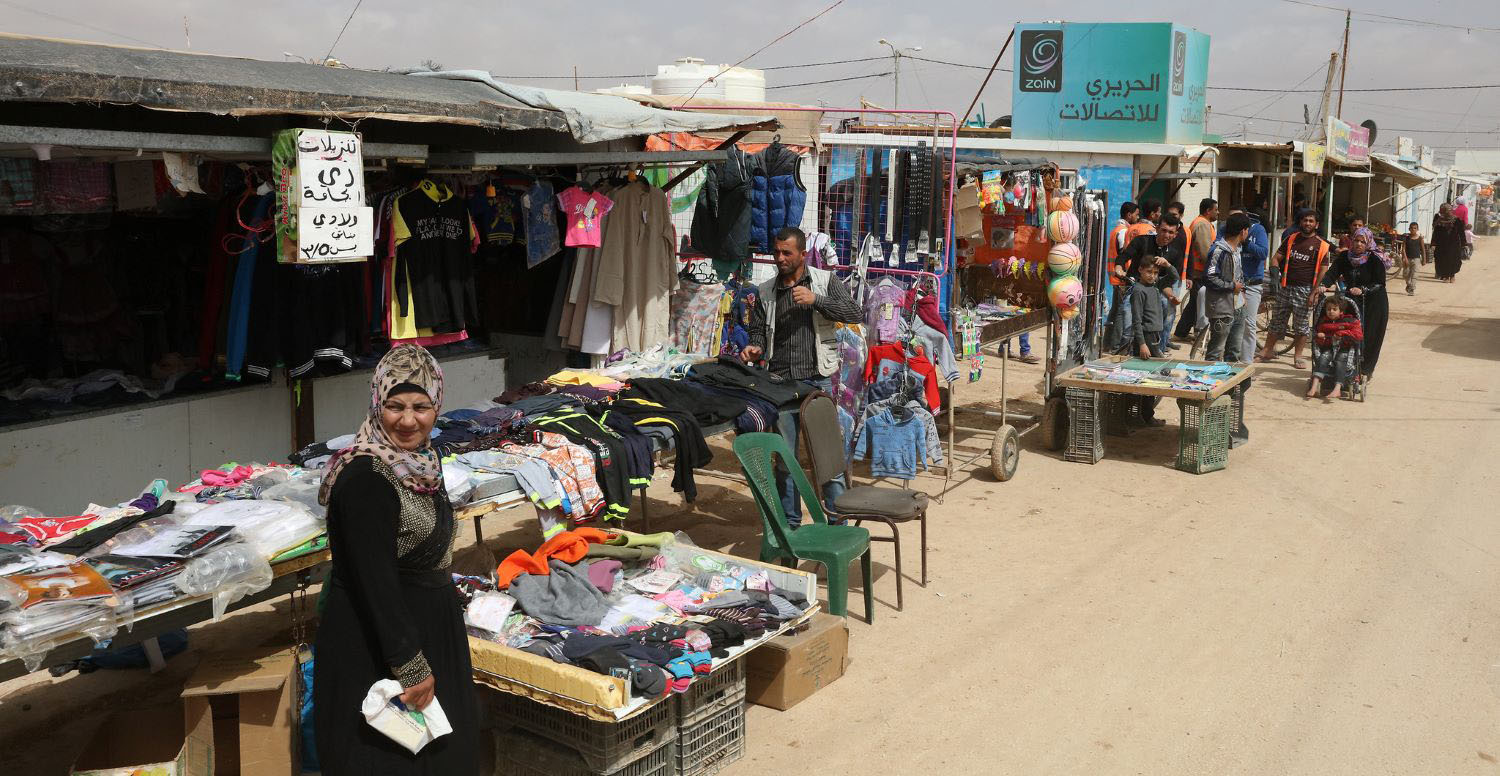Recommended

Event
The COVID-19 pandemic has highlighted once again that the humanitarian business model is poorly suited to today’s world. Humanitarian action is most effective when it is demand-driven and locally owned. But the humanitarian sector remains supply-driven: oriented primarily around donor preference and the global mandates of large aid agencies.
These power imbalances have existed for years, but the pandemic has brought them into sharper focus. Pandemic funding has flowed overwhelmingly to large traditional aid agencies—even as local frontline responders, who are far better positioned to intervene, lack support. And with famine risks growing in multiple countries and other secondary humanitarian impacts of the pandemic emerging, there is urgent need for new approaches.
In October, our team at CGD convened two private virtual roundtables, one with senior donor officials and another with leaders of humanitarian aid organizations, to discuss ideas on future humanitarian reforms. The meetings were held under the Chatham House Rule as part of our research initiative exploring how changes to field practice, financing models, and humanitarian governance can improve humanitarian outcomes. We kicked off the conversation with a discussion of our recent paper on reforming humanitarian coordination, findings from our research on donor behaviors, and three emerging proposals to remake humanitarian financing.
Area-based coordination
In a paper published earlier this year, we recommended a transition from the current “cluster” approach toward an area-based coordination model. The “cluster” approach, organizing every humanitarian response by pre-defined technical sectors overseen by nominated “cluster lead” agencies was put in place fifteen years ago.
The approach has fulfilled its main objective: to avoid gaps and increase quality in humanitarian response. But the clusters have also cemented fragmentation and the overwhelming dominance of a few agencies. They have been consistently weak at frontline coordination, the inclusion of national and local actors, and accountability to affected people. Our proposal would see program coordination organized around community or geography, not sector, and explicitly integrated and multi-sectoral and rooted in the communities concerned through direct engagement in each phase of the program cycle. This does not mean doing away with the national-level clusters, but strengthening their comparative advantage as quality assurers and gap-fillers.
Understanding donor behavior
Initial findings from a survey of 14 donors collectively providing over 60 percent of official humanitarian aid, and semi-structured interviews with nine of them, revealed ongoing fragmentation and misalignment between policy commitments and practice. All donors rely on international organizations —particularly in the UN system—as a pass-through mechanism to pool resources and risks and make allocative decisions.
Donors expressed dissatisfaction with how this system performs, including its ongoing fragmentation, the data on needs and results it provides, the speed and cost of channeling resources to the frontline. Still, they are heavily reliant on the system, and find it difficult to envision an alternative. So, donors attempt to retain influence by targeting their funding toward their own institutional priorities and their own respective accountability requirements. In doing so, they reduce the potential benefits of pooling their resources. For instance, while they can usually predict the bulk of their overall humanitarian budget allocations year on year, donors rarely share that predictability in a collective way with their partners. And, in spite of commitments to more flexible financing, the proportion of earmarked grants has increased in recent years, and several donors admit to using earmarking as a way to align the system to their priorities.
This behavior collectively creates a “lumpy” flow of funding to crises, in which humanitarian country teams must plan operations anew each year without a clear idea of what resources they will receive, through which organization, and toward which priorities. This funding flow makes coherent, multi-year planning nearly impossible, even as most crises are now protracted in nature. While some large donors are contributors to multilateral pooled funds, others still prefer using individual agencies as pass-through mechanisms, effectively sustaining a fragmented system.
Changing individual donors’ practices might be feasible, but would require a significant expenditure of political will that is difficult for donor leaders to generate
Interestingly, our research found that most of these practices are done at the donors’ discretion, not due to implacable legislative or policy requirements. Instead, barriers to change are largely rooted in a collective political economy that makes change difficult. Changing individual donors’ practices might be feasible, but would require a significant expenditure of political will that is difficult for donor leaders to generate.
This stagnation, in turn, feeds a collective action problem, in which there is little incentive for any individual donor—especially small and mid-sized donors—to invest in significant institutional change if they assume other donors are not likely to do so as well. And numerous donors cited a legacy of trusted relationships—and a degree of co-dependence—between their institutions and their longstanding international organization partners. The barriers then are less about major legal or policy reforms, and more about shortfalls in political will that make it difficult to escape a collective action trap.
Building a new business model
Building the political will to escape the collective action trap starts by recognizing that there are, indeed, different and better ways of financing and governing the humanitarian sector. Numerous donors observed to CGD that the lack of obvious alternative approaches was an impediment to more fundamental change. With that in mind, CGD presented the roundtables with three emerging ideas to overhaul the incentive structures built into the sector’s financial model. These proposals would collectively shift power and resources toward local and frontline responders, increase the predictability and quality of funding, and enable greater cohesion and effectiveness:
1. A global humanitarian replenishment mechanism.
Modelled on the Global Fund, a data-driven, multi-annual replenishment fund would help streamline and prioritize funding flows according to crisis severity. Advance commitments by donors would increase predictability and allow for true multi-year financing at a crisis-wide level (rather than simply for individual organizations or projects). A bond instrument—such as that used for investing in vaccines—could transform some of these commitments into increased liquidity to invest in interventions proven to reduce humanitarian need, such as anticipation, preparedness and early action.
2. Re-balancing the pooled funds ecosystem.
At present, the vast bulk of donor funding is pooled by major UN agencies’ program budgets, rather than by actual pooled fund instruments. This means that by the time donor funding reaches a country, it is de facto earmarked by agency and sector and cannot be flexible and responsive to local priorities.
We proposed that this be flipped: that at country level, the core pass-through mechanism should be a strengthened pooled fund, rather than individual agencies’ programs. These reimagined country-level pooled funds would be resourced via block grants from the replenishment mechanism or bilateral donors, helping to reduce layers of transactional costs. And they would be significantly more accessible to local humanitarian actors, who could compete with big international players on a more even footing. At the front end, an independent advisory board would enhance the ability of such funds to allocate according to need rather than mandate and to fund multi-year, multi-sector, adaptive programs based on collective outcomes.
3. Financing by function.
With pooled funds the main pass-through mechanism, there would need to be a more reliable way to finance the core capacities and mandated functions of international humanitarian agencies. These are currently funded mainly through overheads on projects, thus creating an incentive for agencies to capture the largest possible share of donor’s program funding and to retain the pass-through function. At the country-level, funding for delivery should be separate from funding for assessment, targeting, monitoring and evaluation, to reduce conflicts of interest.
Key takeaways
Four main takeaways emerged from the discussion at the CGD private roundtables with humanitarian donors and operational organizations:
A. There is significant support for a move to area-based coordination.
In fact, individual organizations are increasingly designing their programs on an area-basis and sub-national hubs are becoming an ever-stronger feature of humanitarian coordination. Participants agreed that it was now time to consider a systemic rethink. However, they also underlined the need to retain the important benefits brought about by the cluster approach, in particular the predictability of coordination arrangements and the operational capacity required to be providers of last resort. Relatively simple adaptations such as holding field coordination meetings in local languages can be immediately implemented and would go a long way towards improving inclusion and signaling a power shift.
B. Bold changes to the humanitarian business model require concerted political will from all stakeholders.
The handful of donors holding the majority share of humanitarian finance are not sending a coherent signal for change through their funding practices. A perception remains that unless donors have a stake in their governance, pooled funds—particularly at the global level—cannot provide the same level of accountability, oversight, attribution and visibility of donor funds compared with agency projects. Historical ties between donors and UN agencies also play a role. Not unlike the problems found in the management of other global commons, this legacy leads to funding behaviors that can be justified in isolation but make little sense collectively. Similarly, there is currently insufficient political will to alter overheads structures and fund core costs separately, for instance through assessed contributions.
C. Significantly increasing country-level pooled funds holds most promise in the short-term.
Well-managed country-based pooled funds can offer levels of accountability and visibility equivalent or superior to that of agencies, which makes them increasingly attractive to donors. For organization at the front line, they offer more rapid disbursements against agreed priorities, avoiding “darling” and “orphan” sectors. But any increase should avoid creating a new concentration of disproportionate power. The governance of the funds should ensure more adequate representation of relevant stakeholders and more robust checks and balances.
D. More radical change is possible.
Several participants suggested that power could be rebalanced more quickly towards affected people by massively scaling-up the use of multi-sector cash transfers and resolving the issue of how cash assistance is governed. Adequately investing in local civil society organizations by supporting their operating costs, including through overheads, could be another simple way to shift the power in practice. Scaling-up investments in preventive action—particularly protection activities—should also be a priority.
Disclaimer
CGD blog posts reflect the views of the authors, drawing on prior research and experience in their areas of expertise. CGD is a nonpartisan, independent organization and does not take institutional positions.
Image credit for social media/web: WFP/Rein Skullerud





